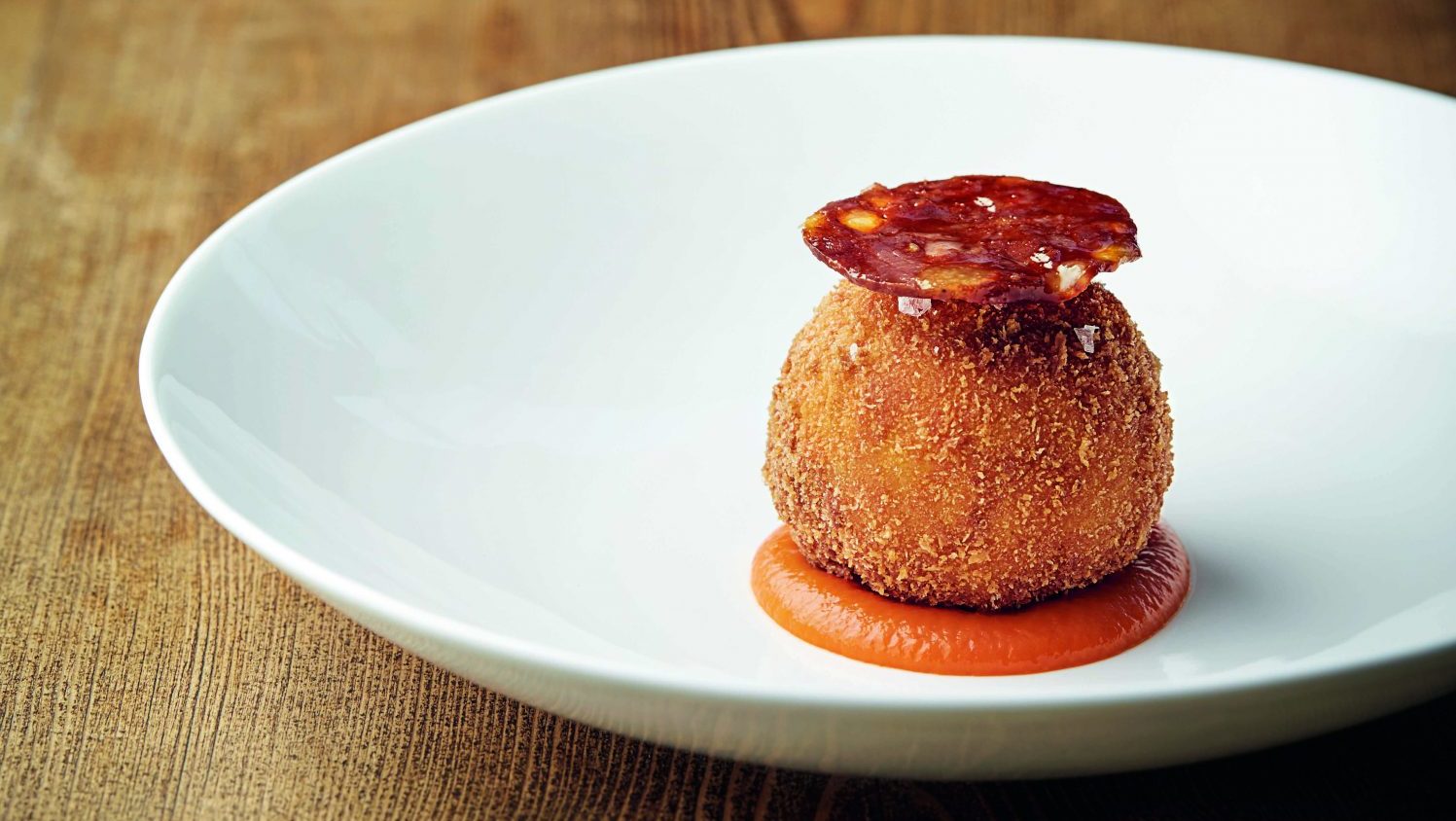When did chorizo become a staple in British households? A little over a decade ago, or thereabouts. At least that’s around the time it truly went mainstream, when supermarkets started flinging the cured Iberian meat into just about everything and middle-of-the-road pubs decided menus wouldn’t work without chicken and chorizo skewers with some sort of
bouncy, garlic-imbued sauce.
Today chorizo is one of those standard ingredients. To open the fridge in a meat-eating British household and fail to spot a long, spicy sausage – or at least slices packaged up – would be fairly unlikely. Only 20 years ago and it would’ve been a rarity. Thirty or more and it was only available only from specialist suppliers, if at all.
Chorizo, red with paprika and eaten on the peninsula for centuries, is a Spanish success story. In 2013, about the time I secured my first full-time journalism job in Britain, on a local paper, the food magazine Olive asked
the public which ingredient they wouldn’t be able to live without. A cool 42% named chorizo. Around the same time a report by a retail analyst said sliced meats from the continent were bought by about 50% of British consumers. And they’ve stuck.
Like hummus and olives, two other central components of a train picnic in modern Britain, chorizo is almost as much of a cultural touchpoint as a sausage roll. Who can forget when Jamie Oliver used it in a paella recipe in 2016? It all kicked off. Spain looked at us with dismay – but wouldn’t dream of ceasing imports.
Today there may be some reluctance in “foodie” circles. Chorizo has been overused. Those skewers, by all accounts, are dry and tired and show a distinct lack of invention. Then again, probably the recipe that comedian
James Acaster mentions most on podcast Off Menu is a chorizo and broccoli pasta, created by chef Tom Kerridge. Chorizo remains, as it should.
In this recipe, also by Kerridge, chorizo is used sparingly, a finishing touch in what is more about the salt cod, another prized preparation in Spain and Portugal. But it is there, a cured meat crown to an excellent variety of Scotch egg. Find it at Kerridge’s Michelin-starred pub The Coach in Marlow, Buckinghamshire, or make it at home – you’ve probably got some chorizo lurking in the fridge, right?
SALT COD SCOTCH EGGS WITH RED PEPPER SAUCE
MAKES 12
150g sea salt flakes
500ml olive oil, plus 4 tablespoons
2 tablespoons Pernod
2 tablespoons dry white wine
1 teaspoon saffron threads
750g cod fillets, skinned
2 or 3 baking potatoes – you are going to need 300g of baked flesh
2 garlic cloves, crushed
12 quail’s eggs
150g plain white flour, for dusting
2 eggs, beaten
150g fine dry breadcrumbs (use panko breadcrumbs if possible) for coating
Vegetable oil for deep-frying
Salt, to taste
FOR THE RED PEPPER SAUCE
4 tablespoons olive oil
3 red peppers, deseeded and sliced
2 banana shallots, sliced
1 fresh red chilli, sliced – with seeds and all
½ teaspoon saffron threads
100ml dry white wine
50g sugar
50ml white wine vinegar
100g butter, cubed
At least 24 hours ahead, mix the sea salt flakes, 4 tablespoons olive oil, the Pernod, white wine and saffron threads together in a large non-metallic bowl until it forms a paste. Add the cod and rub it all over with the paste, then cover the bowl with clingfilm and put in the fridge for 24 hours.
When ready to cook the cod, preheat the oven to 140°C/Gas Mark 1. Remove
the cod from the salt paste and rinse thoroughly in cold running water for 5
minutes. Place it in a roasting tray, pour over 500ml olive oil and cover the
tray with kitchen foil. Place the tray in the oven and roast the cod for 25 minutes.
Remove the tray from the oven and leave the cod to cool completely in the
olive oil. When the fish is cool enough to handle, remove any pin bones and
flake the flesh.
As soon as the cod comes out of the oven, increase the oven temperature to
180°C/Gas Mark 4. When it reaches the correct temperature, place the potatoes in the oven and bake for 1½ hours, or until cooked through and
tender. When cool enough to handle, peel them and put them through a potato ricer into a large bowl or use a masher. Add the garlic cloves and flaked cod to 300g mashed potatoes and beat together, then leave to one side.
Meanwhile, bring a saucepan of water to the boil over a high heat and place a bowl of iced water next to the hob. Add the quail’s eggs to the boiling water and set a timer for 2 minutes. After 2 minutes, use a slotted spoon to immediately transfer them to the iced water and leave them to cool. When the eggs are cool, peel them, but be careful not to break the eggs!
Shape the cod and potato mix around the eggs to form 12 mini Scotch eggs. Place the flour, egg wash and breadcrumbs in separate bowls in a row on the work surface. One by one, dip the Scotch eggs into the flour, tapping off any excess, then into the eggs, letting the excess drip back into the bowl, and then into the breadcrumbs. Place each Scotch egg on kitchen roll as it is coated and keep in the fridge until you are ready to fry them. They can be kept for up to 2 days in the fridge at this stage.
To make the red pepper sauce, heat the olive oil in a saucepan over a medium heat. Add the peppers, shallots and chilli and fry, stirring, for 3–5 minutes until softened. Add the saffron, reduce the heat to low and leave to slowly cook for 20–25 minutes until the peppers and shallots are very tender.
Stir in the wine, sugar and white wine vinegar, increase the heat to medium
and leave to simmer, uncovered, until almost all the liquid has evaporated. Transfer the sauce to a blender and purée. Add the butter, which will give the sauce a shine, and blend again. Season, then pass the sauce through a sieve. Leave to one side to cool until needed.
When ready to deep-fry the Scotch eggs, heat enough oil for deep-frying in a deep-fat fryer or heavy-based saucepan to 180°C. Working in batches, if necessary, add the eggs to the oil and deep-fry for 3–4 minutes until they are nice and golden brown. Drain well on kitchen paper and sprinkle with salt. Reheat the oil between batches, if necessary. Serve the eggs immediately while they are still hot with the red pepper sauce.




